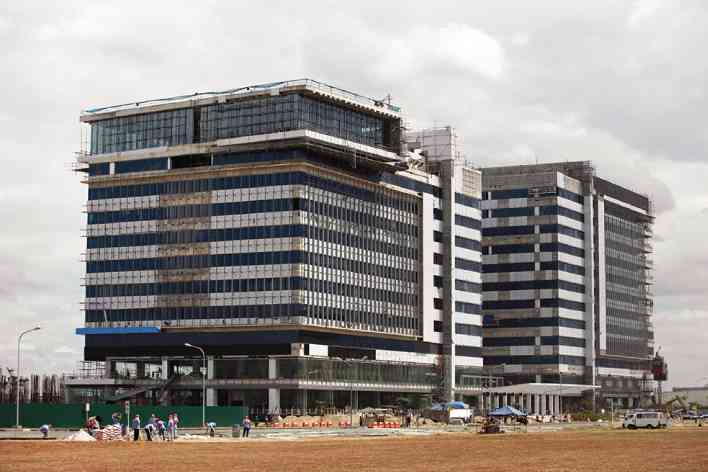A modern city is on the rise in Central Luzon, poised to become the country’s next world class economic hub outside Metro Manila.
The 177-hectare business center called Global Gateway Clark is gearing up as a priority location for some of the biggest companies scrambling for prime spots in a masterplanned property that is at par with Bonifacio Global City.
Michael Russell, president of Global Gateway Development Corp., explained that this ultra modern city is livable, disaster-ready, and designed to accommodate multinational corporations like airline companies, business process outsourcing firms, healthcare industries and transportation facilities.
More notably, it will offer a solution to some of Metro Manila’s pressing problems such as overpopulation, traffic, and airport congestion.
Four zones
Global Gateway Clark sits at the crossroads of the North Luzon Expressway and Subic Clark Tarlac Expressway. It is also 30 minutes away from the newly expanded Subic Bay deep-water port and is directly adjacent to Clark International Airport.
Once completed, the city will be divided in four zones namely Aeropark, Business Park, Town Center, and the Logistics Park.
The Aeropark will be home to research and development, modeling and simulation, as well as IT centers, BPO campuses, and educational facilities, while the Town Center will host retail establishments.
The Business Park is where prime spaces will be located, along with complementary retail, pocket parks, and residential spaces that can support a true live, work and play environment.
Meanwhile, the Logistic Park is masterplanned to house several warehousing and distribution facilities. Businesses doing light manufacturing, according to Russell, can also operate out of this zone with ease.
Russell noted that the future of the Philippine economy is just outside Metro Manila where space and the people are available to lead the next wave of growth.
“In the next few years, international businesses and workers will be catering to even larger markets and will require proportionally larger, more efficient and better connected environments to keep up with the country’s growing economy,” Russell concluded.
